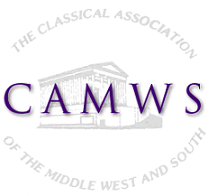With the introduction of the 1997 Standards for Classical Language Learning, Classics instructors from across the country were provided with a consistent set of Standards on which to base their curriculum. Nearly twenty years later, these Standards have undergone major revisions, led by the American Council on the Teaching of Foreign Languages (ACTFL). In concert with ACTFL’s Standards project, classical associations from across the country have come together and formed a task force to further adapt the ACTFL World Readiness Standards for Learning Languages and to revise the 1997 Standards for the next generations of students. This paper seeks to accomplish two goals. First, it will delineate the differences between the 1997 Standards and the current version, providing the rationale for why the changes have been made due to shifts in pedagogical thinking and in culture, more broadly. Secondly, it will outline several ways in which the new Standards can have a direct, positive effect on daily classroom instruction. Particular attention will be paid to the new focus on proficiency vs. performance, the increased emphasis on 21st century skills, and the refashioning of the language of the Standards to reflect changes in pedagogical practice.
From Standards for Classical Language Learning to World-Readiness Standards: What’s New and How They Can Improve Classroom Instruction
Abstract of Article:
Keywords:

